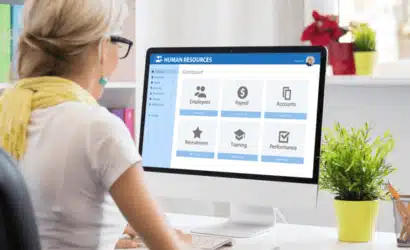Your Guide to Payroll Parallel Testing
Updated 11th June 2025 | 8 min read Published 15th April 2024

Payroll parallel testing is one of the final stages of a system implementation process. The procedure is necessary to ensure that your payroll continues to run accurately and smoothly while you switch from an old payroll system to a new one.
Any business or organization should plan for parallel payroll testing while their new system is being adopted as it identifies discrepancies and errors before it goes live.
This guide will explain everything you need to know about payroll parallel testing and why it is so important for a problem-free payroll.
What is payroll parallel testing?
Parallel payroll testing checks that your new system is running your payroll accurately and your employees are being paid correctly and on time. When parallel payroll testing is carried out the old system – also known as legacy system – runs in unison with the new payroll software so that any errors, problems, or discrepancies can be identified and resolved.
Running the old and new payroll systems simultaneously allows you to compare the results and ensure complete accuracy before you fully transition to the new system. The goal is to reach a point where employees’ pay calculations are the same with both the old and new systems before you go live.
Because parallel testing can be a long and complicated manual process, some organizations with limited time and resources prefer to outsource their payroll to an experienced provider that will run every aspect of their payroll function in an accurate and compliant way.
How does payroll parallel testing work?
There are many stages to successful payroll parallel testing. If the process seems tedious, the testing stage will undoubtedly save you from bigger headaches down the line. Without proper testing, you may stumble upon a host of problems with your new payroll software and discover that employees are receiving incorrect pay.
Below, we’ll explore the 6 steps for conducting payroll parallel testing so that you can achieve a seamless transition between your old and new payroll software.
1. Planning phase
When you change your payroll, you must cover all bases to avoid any hitches when you go live. Therefore, it’s recommended that you create a thorough plan including specific times and activities for running your payroll parallel test. The purpose of the planning phase is to:
- Define objectives: The goals and objectives of your payroll parallel testing should be clearly defined at the outset. This includes identifying key performance indicators and setting testing criteria that allow you to quickly identify and rectify any issues.
- Set a timeline: Develop a detailed timeline for testing, results analysis, and any system adjustments that may be necessary when comparing results.
- Allocate Resources: Identify the resources you need to run parallel testing effectively such as personnel, software, and budget.
2. Data collection
One of the most important stages of payroll parallel testing is data collection and preparation. You should:
- Extract the data: All payroll information for a specific payroll cycle including taxes and benefits should be pulled from the old payroll system and stored in a secure place.
- Map the data: Map the extracted data and enter it into the new payroll system’s relevant data fields, paying close attention to consistency and compatibility.
- Convert the data: Transform the mapped data from the old system into the new system’s required format.
3. Carry out payroll parallel testing
It’s time to begin the testing process while you switch from the old to new payroll software. This stage should include:
- Develop multiple scenarios: Create test scenarios that cover all aspects of payroll processing such as data entry, payroll calculations, tax contributions, bonuses, and more.
- Run the parallel test: Execute your parallel test by running your old and new system simultaneously for a set period. The number of pay cycles you test will depend on the number of employees, complexity, and the level of payroll automation you have. While one payroll cycle is enough for parallel testing, you’ll get more accurate data from two or three cycles.
- Compare results: Collect all data from both payroll systems and compare the results to identify errors, discrepancies, and operational issues that may arise in the future.
4. Full system analysis
When payroll parallel testing is complete, you’ll have all the information you need to rectify any issues that arise between the old and new systems before going live. This should include:
- Error resolution: All errors, discrepancies, and variations between the old and new systems should be thoroughly investigated and analyzed to identify the source and plan a solution.
- System validation: By now you’ll have all the information you need to accurately assess the reliability of your new payroll system based on the results of parallel testing.
5. Parallel test reporting
You must record all test results from payroll parallel testing for future reference and audit purposes. This should include:
- Thorough documentation: All test scenarios, results, observations, and corrective actions that took place during testing should be clearly documented.
- Reporting: Create a detailed report summarizing the parallel test process and include all findings, recommendations, and areas for improvement.
6. Go live with the new system
If you’re satisfied with the results of parallel payroll testing, it’s time to put the new system into practice and go live. This final phase should involve the following:
- Transition plan: Develop a plan and timeline for transitioning from the old to the new system. This should include all aspects of the transition process from data migration to staff training to the actual switch-over.
- Go live: Launch the new payroll system while closely monitoring the performance in case errors or teething problems must be addressed and resolved.
Can I choose any pay cycle for payroll parallel testing?
The payroll cycle you choose for testing purposes should reflect a typical payroll cycle in your business. Why is this? If you parallel test during cycles involving multiple salary increases, bonus payments, or an influx of new employees, it could lead to a rise in errors.
Similarly, running payroll parallel testing during cycles with low activity can also be counterproductive. This is because cycles where there are fewer transactions than normal, such as summer and winter holidays, may not accurately reflect a typical payroll run at your business and won’t provide a true picture of how the new system will perform in busier times such as month-end.
Advantages and disadvantages of payroll parallel testing
Carrying out payroll parallel testing requires time, resources, and close attention to detail. Despite these challenges, the benefits of payroll parallel testing outweigh the disadvantages by ensuring the accuracy, reliability, and compliance of the new software.
Advantages of payroll parallel testing
- Data accuracy: Parallel testing enables you to verify the accuracy of the new payroll software by comparing results with those of your legacy software. This will confirm whether your payroll calculations are error-free, your employees are paid correctly, or if more testing is required before system implementation.
- Risk mitigation: Organizations can mitigate risks before going live with a new payroll system by running parallel testing. This will reduce the likelihood of costly mistakes and downtime and keep operational disruptions to a minimum.
- Employee confidence: As the system you are testing will be carrying out your future payroll calculations, it makes sense for those who’ll use it most frequently to carry out payroll testing. Not only does this provide hands-on training, but it also empowers them with troubleshooting skills they may need when the system goes live.
Disadvantages of payroll parallel testing
- Labor intensive: One of the drawbacks of payroll parallel testing is that it can double the workload required to process payroll information into both the old and new systems during the transition phase, which may delay implementation deadlines. Again, this is another reason why many businesses and organizations outsource their payroll function rather than conduct payroll parallel testing themselves.
- Complexity: Parallel testing can be complex, particularly for organizations with large and diverse workforces or complicated payroll processes.
- Limited scope: The nature of payroll testing with its specific focus on cycles or processes means it may not always uncover every potential issue or scenario, leaving room for undiscovered errors or discrepancies.
Discrepancies in payroll parallel testing
When you’ve conducted parallel testing for at least one payroll cycle and ideally more, you’ll be ready to compare the data and results from the new and legacy systems. It’s important to note that the test results do not need to be an exact match, but they do need to highlight any discrepancies so they can be addressed.
The majority of errors and discrepancies that come to light can often be placed into four categories:
- Data entry errors: This is where employee information is incorrect because of mistakes made during manual input or poor automation.
- Explicable differences: For example, rounding errors have led to miscalculations or less precise payroll data.
- Rule creation errors: Where mistakes have been made during the process of rule creation and transformed to the new system.
- Unexplainable errors: Where issues and problems arise during parallel testing that cannot easily be explained by those conducting the tests.
Placing any inconsistencies and discrepancies into these categories will help teams uncover the root cause of any problems and devise an action plan to correct them. In the case of unexplained errors, parallel testing should continue until the issues are resolved and the new software is error-free and works as it should.
Organizations and businesses should never go live with a new payroll system until they are satisfied with the parallel test results and are certain the software is fully accurate, and that employees’ pay is being calculated correctly.
How you can trust IRIS FMP Global to solve your payroll parallel testing challenges
With our global payroll services your international employees will always be paid accurately and on time, so you won’t need to worry during payroll parallel testing.




